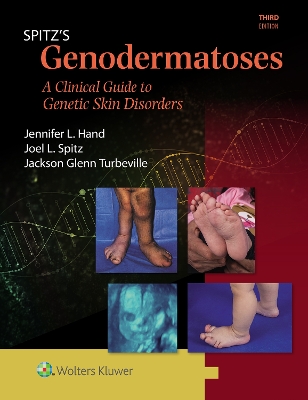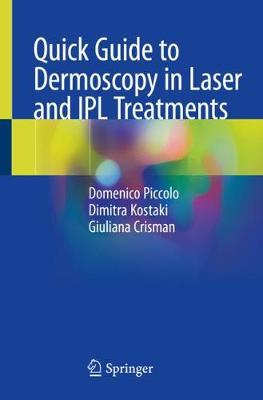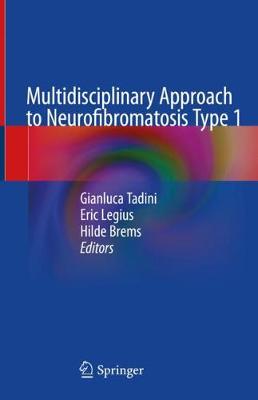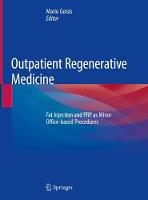Vitiligo
 -15%
portes grátis
-15%
portes grátis
Vitiligo
Taieb, Alain; Picardo, Mauro
Springer International Publishing AG
08/2019
496
Dura
Inglês
9783319629582
15 a 20 dias
1562
Descrição não disponível.
Preface.- I Defining the Disease.- 1.1 historical aspects.- 1.2 definitions and classification.- 1.3 Epidemiology.- 1.4 Histopathology including electron microscopy.- 1.5 Clinical aspects Including natural history according to subsets.- Short introduction.- 1.5.1 vitiligo including acrofacial, universalis.- 1.5.2 segmental vitiligo Including clinical aspects.- 1.5.3 Mixed vitiligo.- 1.5.4 rare variants including inflammatory.- 1.5.5 subtypes of mucocutaneous pigment cell involvement: mucosal, hair follicle (leukotrichia), nevus cells (halo nevus).- 1.5.6 extracutaneous melanocytes.- 1.5.7 Environmental triggers: Koebner phenomenon and occupational vitiligo.- 1.5.8 associated disorders and comorbidities includingautoimmune/inflammatory disorders, immunodeficiences, rare monogenic diseases.- 1.5.9 age and vitiligo: childhood, pregnancy, late-onset.- 1.5.10 vitiligo and skin of colour.- 1.6 assessment and scoring including QoL.- 1.7 Editor's synthesis.- II Understanding the Disease.- 2.1 pathophysiology overview.- Unifying concepts V-SV.- 2.2 methods to study vitiligo.- 2.2.1 in vivo confocal microscopy and other noninvasive techniques.- 2.2.2 animal models.- 2.2.3 in vitro.- 2.3 critical assessment of published data on vitiligo Short introduction.- 2.3.1 Genetics.- 2.3.2 epigenetics.- 2.3.3 melanocyte stability.- 2.3.4 oxidative stress and intrinsic melanocyte defects.- 2.3.5 immunity (innate, adaptive). Innate and adaptive separated.- 2.3.6 peptides, growth factors including POMC and family.- 2.3.7 Stem cells.- 2.3.8 other defects and mechanisms.- 2.4 pathophysiology of segmental vitiligo.- 2.5 Editor's synthesis.- III Treating the Disease.- 3.1 management overview.- What has changed in a therapeutic perspective.- 3.2 discussion of available and new therapies.- 3.2.1 medical therapies.- 3.2.2 phototherapies.- 3.2.3 surgical therapies.- 3.2.4 depigmenting therapies.- 3.3combined/sequential/integrated therapies including maintenance therapy.- 3.4 camouflage.- 3.5 photoprotection.- 3.6 age, gender, ethnic skin, specific locations.- 3.7 psychological intervention.- 3.8 patient's perspectives.- 3.9 discussion of empirical, traditional, alternative approaches.- 3.10 evidence-based medicine perspective and guidelines.- 3.11 beyond guidelines.- 3.12 editor's synthesis and perspectives.- Subject Index.
Este título pertence ao(s) assunto(s) indicados(s). Para ver outros títulos clique no assunto desejado.
Combined therapies;Immune activation;Melanocyte degeneration;Melanocyte transplantation;Phototherapy
Preface.- I Defining the Disease.- 1.1 historical aspects.- 1.2 definitions and classification.- 1.3 Epidemiology.- 1.4 Histopathology including electron microscopy.- 1.5 Clinical aspects Including natural history according to subsets.- Short introduction.- 1.5.1 vitiligo including acrofacial, universalis.- 1.5.2 segmental vitiligo Including clinical aspects.- 1.5.3 Mixed vitiligo.- 1.5.4 rare variants including inflammatory.- 1.5.5 subtypes of mucocutaneous pigment cell involvement: mucosal, hair follicle (leukotrichia), nevus cells (halo nevus).- 1.5.6 extracutaneous melanocytes.- 1.5.7 Environmental triggers: Koebner phenomenon and occupational vitiligo.- 1.5.8 associated disorders and comorbidities includingautoimmune/inflammatory disorders, immunodeficiences, rare monogenic diseases.- 1.5.9 age and vitiligo: childhood, pregnancy, late-onset.- 1.5.10 vitiligo and skin of colour.- 1.6 assessment and scoring including QoL.- 1.7 Editor's synthesis.- II Understanding the Disease.- 2.1 pathophysiology overview.- Unifying concepts V-SV.- 2.2 methods to study vitiligo.- 2.2.1 in vivo confocal microscopy and other noninvasive techniques.- 2.2.2 animal models.- 2.2.3 in vitro.- 2.3 critical assessment of published data on vitiligo Short introduction.- 2.3.1 Genetics.- 2.3.2 epigenetics.- 2.3.3 melanocyte stability.- 2.3.4 oxidative stress and intrinsic melanocyte defects.- 2.3.5 immunity (innate, adaptive). Innate and adaptive separated.- 2.3.6 peptides, growth factors including POMC and family.- 2.3.7 Stem cells.- 2.3.8 other defects and mechanisms.- 2.4 pathophysiology of segmental vitiligo.- 2.5 Editor's synthesis.- III Treating the Disease.- 3.1 management overview.- What has changed in a therapeutic perspective.- 3.2 discussion of available and new therapies.- 3.2.1 medical therapies.- 3.2.2 phototherapies.- 3.2.3 surgical therapies.- 3.2.4 depigmenting therapies.- 3.3combined/sequential/integrated therapies including maintenance therapy.- 3.4 camouflage.- 3.5 photoprotection.- 3.6 age, gender, ethnic skin, specific locations.- 3.7 psychological intervention.- 3.8 patient's perspectives.- 3.9 discussion of empirical, traditional, alternative approaches.- 3.10 evidence-based medicine perspective and guidelines.- 3.11 beyond guidelines.- 3.12 editor's synthesis and perspectives.- Subject Index.
Este título pertence ao(s) assunto(s) indicados(s). Para ver outros títulos clique no assunto desejado.







